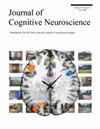Prior Context and Individual Alpha Frequency Influence Predictive Processing during Language Comprehension
IF 3.1
3区 医学
Q2 NEUROSCIENCES
引用次数: 0
Abstract
The extent to which the brain predicts upcoming information during language processing remains controversial. To shed light on this debate, the present study reanalyzed Nieuwland and colleagues' (2018) [Nieuwland, M. S., Politzer-Ahles, S., Heyselaar, E., Segaert, K., Darley, E., Kazanina, N., et al. Large-scale replication study reveals a limit on probabilistic prediction in language comprehension. eLife, 7, e33468, 2018] replication of DeLong and colleagues (2015) [DeLong, K. A., Urbach, T. P., & Kutas, M. Probabilistic word pre-activation during language comprehension inferred from electrical brain activity. Nature Neuroscience, 8, 1117–1121, 2005]. Participants (n = 356) viewed sentences containing articles and nouns of varying predictability, while their EEG was recorded. We measured ERPs preceding the critical words (namely, the semantic prediction potential), in conjunction with postword N400 patterns and individual neural metrics. ERP activity was compared with two measures of word predictability: cloze probability and lexical surprisal. In contrast to prior literature, semantic prediction potential amplitudes did not increase as cloze probability increased, suggesting that the component may not reflect prediction during natural language processing. Initial N400 results at the article provided evidence against phonological prediction in language, in line with Nieuwland and colleagues' findings. Strikingly, however, when the surprisal of the prior words in the sentence was included in the analysis, increases in article surprisal were associated with increased N400 amplitudes, consistent with prediction accounts. This relationship between surprisal and N400 amplitude was not observed when the surprisal of the two prior words was low, suggesting that expectation violations at the article may be overlooked under highly predictable conditions. Individual alpha frequency also modulated the relationship between article surprisal and the N400, emphasizing the importance of individual neural factors for prediction. The present study extends upon existing neurocognitive models of language and prediction more generally, by illuminating the flexible and subject-specific nature of predictive processing.先验语境和个体阿尔法频率影响语言理解过程中的预测处理
在语言处理过程中,大脑在多大程度上能预测即将到来的信息仍存在争议。为了阐明这一争论,本研究重新分析了[Nieuwland, M. S., Politzer-Ahles, S., Heyselaar, E., Segaert, K., Darley, E., Kazanina, N., et al.eLife, 7, e33468, 2018] 复制[DeLong, K. A., Urbach, T. P., & Kutas, M. Probabilistic word pre-activation during language comprehension inferred from electrical brain activity.Nature Neuroscience, 8, 1117-1121, 2005]。参与者(n = 356)在观看包含不同可预测性的冠词和名词的句子时,他们的脑电图会被记录下来。我们测量了关键词语前的ERP(即语义预测电位),以及词语后的N400模式和单个神经指标。我们将 ERP 活动与词语可预测性的两种测量方法进行了比较:掐词概率和词性意外。与之前的文献不同,语义预测电位振幅并没有随着掐词概率的增加而增加,这表明该成分可能并不反映自然语言处理过程中的预测。文章中最初的 N400 结果与 Nieuwland 及其同事的研究结果一致,提供了语言中语音预测的反面证据。然而,令人吃惊的是,当句子中前面单词的惊奇度被纳入分析时,文章惊奇度的增加与 N400 振幅的增加相关,这与预测的说法一致。当前面两个词的惊奇度较低时,惊奇度和 N400 振幅之间的这种关系并没有被观察到,这表明在高度可预测的条件下,文章中的预期违规可能会被忽略。个体的阿尔法频率也会调节文章意外和 N400 之间的关系,这强调了个体神经因素对预测的重要性。本研究通过阐明预测处理的灵活性和特定主体性,扩展了现有的语言和预测神经认知模型。
本文章由计算机程序翻译,如有差异,请以英文原文为准。
求助全文
约1分钟内获得全文
求助全文
来源期刊
CiteScore
5.30
自引率
3.10%
发文量
151
审稿时长
3-8 weeks
期刊介绍:
Journal of Cognitive Neuroscience investigates brain–behavior interaction and promotes lively interchange among the mind sciences.

 求助内容:
求助内容: 应助结果提醒方式:
应助结果提醒方式:


